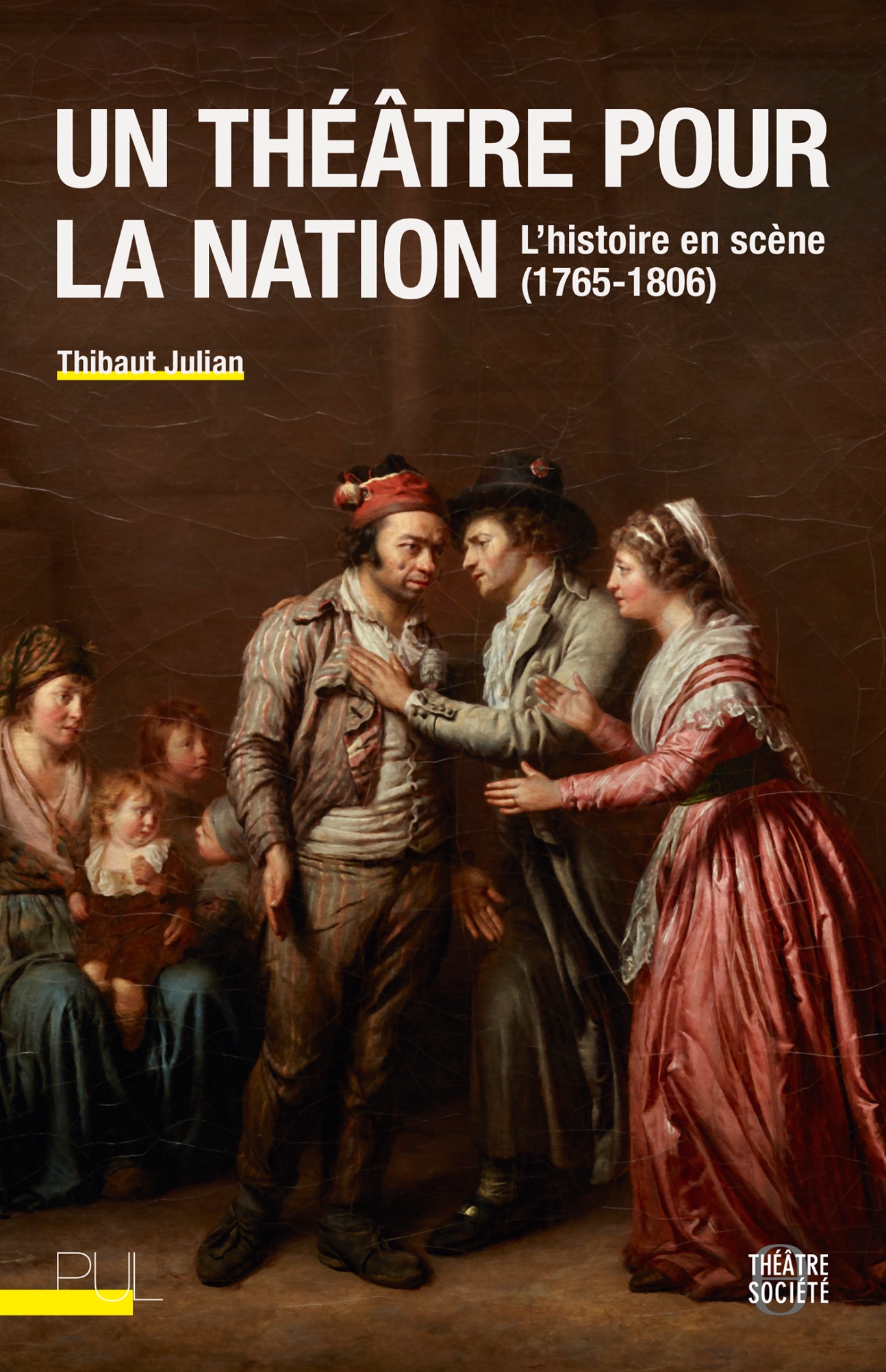At the end of the 18th century, France went through a series of great upheavals, from the decline of the absolute monarchy to Napoleon’s empire. The theater is experiencing an unprecedented vitality which is reflected in the renewal of themes, genres and performances. In the wake of Voltaire and Belloy, many authors sensitive to the rise of patriotism have taken hold of the history of France or current events, making the scene a memorial and a court of the past reflecting the present time. .
This “national theatre” was conceived as a moral and civic device, but the ideal of a united people clashed with representations of antagonistic, monarchical or revolutionary figures, according to constantly evolving ideologies. Mediating the tensions of society, the national theater expresses powerful collective emotions oscillating between admiration and tenderness, fervor and laughter, but also lament and horror in the face of past wounds.
Studying more than 250 plays and their reception thanks to periodical reviews, Thibaut Julian offers all fans a reference work on the history of theater and entertainment during the Enlightenment and the French Revolution.
***
Thibaut Julian is an 18th century French literature and civilization lecturer.And century at the Université Lumière Lyon 2 and member of the Institute for the History of Representations and Ideas in Modernity (IHRIM). He directed with Vincenzo De Santis Theater fever and life under the French Revolution and the Empire (Classics Garnier, 2019).
SUMMARY
introduction……………………………………………. …………………………………………5
A renaissance of historical theatre…………………………………………. … ……..8
The archipelago of the “national theatre” ……………………………………… … ….. ……………….11
Historical, political and memorial issues ……………………………………… …. …… .19
A theater at the service and image of the nation………………………………25
Learning history, from university to theatre………………………………………. ……… …27
Ancient and modern models ……………………………………… ….. …. ……………….34
Celebrating the Monarchy ……………………………………… … …………………………..40
Trumpets and quarrels: the outbursts of patriotism……………………………………… …….46
The nation in revolution ……………………………………… ….. ………………………………54
History torn apart……………………………………………. …………………..63
Verisimilitude and truth ……………………………………… …. . …………………………..65
History and fantasy ……………………………………… … … ………………………………70
Academic position ……………………………………… … ………………………………………72
Authentic testimonials ……………………………………… … .. ………………………..78
Critical deconstruction ……………………………………… … …………………………..81
Legendary Float……………………………………… .. ………………………..86
Generic and formal hybridizations ……………………………………… …….. …. ………95
“The Trophies of Our Ancestors”……………………………………………. ……105
In Search of Lost Origins ……………………………………… … ….. ………106
“French knights such is the character”…………………………..112
Weak kings and tyrants laid bare ……………………………………… .. .. …………..118
National heroines ……………………………………… .. ……………………………128
The troubadour style: from painting to scene, from scene to painting…..134
The Spectacular Revolution or the Era of Talma……………………………………… ……. ….. 143
History to the present……………………………………………. ………………………153
Birth of the “historical fact” ……………………………………… ….. … ……………..154
From parody to pamphlet: iconoclasm and clamor………………………………..163
The public actor or the illusion of allusions……………………………………… …… ….. ….169
A series: Henry IV and the censorship……………………………………… …. …. ……………..176
The Annals and the Revolution ……………………………………… …….. ……………..186
Iconographic notebook
Biodramas and apotheosis:
shadows and lights of commemoration…………………………………………193
Place of national celebrations ……………………………………… … ……….194
The Revolution and the work of mourning ……………………………………… …… ……………..199
The memory of works: iconic, literary and musical echoes….206
The pleasures of the embodied portrait ………………………….. ………. .. ……..211
Enlightenment Memorial and Tribunal ……………………………………… ………….. 217
Political emotions through the prism of the theater………………………………227
The contrasting “charms” of admiration ……………………………………… …. …. ..229
Enthusiasm and virtue: the epic dramatization of the revolution….236
Outrage: Condemnation and Rehabilitation Commemorative ………….243
Terror and Horror: National Theater and Trauma ………………………248
Lamentation and resentment: the royalist martyrology………………257
Hope and forgiveness: poetics and utopia of concord …………….263
Conclusion……………………………………………. …………………………………………271
Bibliography……………………………………………. …………………………………………283
Dramatic body ……………………………………… .. ……………………………283
Other sources……………………………………… …………………………………………297
Critical bibliography ……………………………………… … …………………………….302
Name index……………………………………………. ……………………………323
Index of works……………………………………………. ……………………………331
Thank you……………………………………………. ……………………………337


